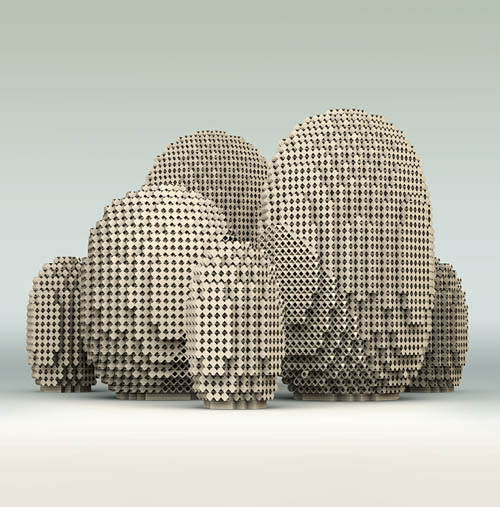 [Image: From "Microclimates" by PostlerFerguson].
[Image: From "Microclimates" by PostlerFerguson].These air-cooling hives made from "3D-printed sand" and designed by PostlerFerguson have been rendered a bit too glossily for my taste, but I love the idea: each unit has "a complex internal structure whose large internal surface area efficiently conditions air passing through it by evaporative cooling. Each cooling tower is made from 3D-printed sand using technology developed by D-Shape."
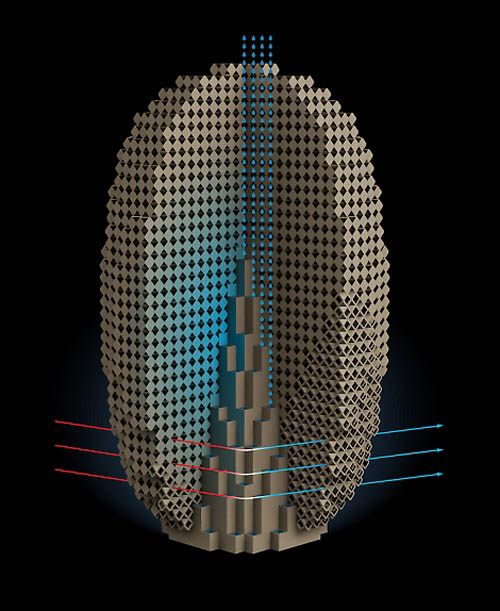
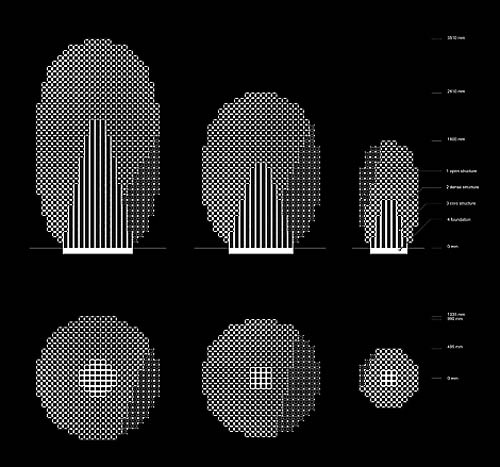
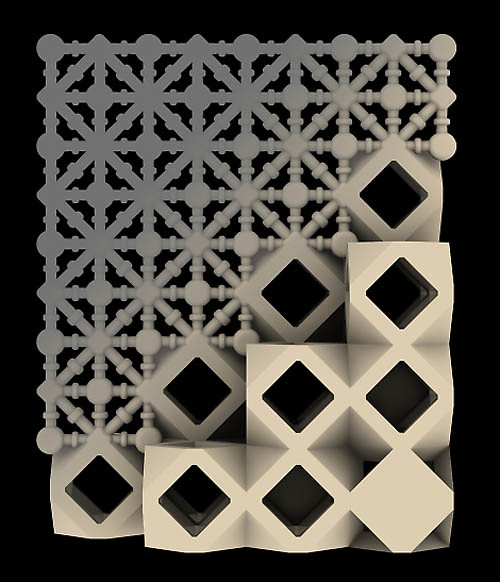 [Images: From "Microclimates" by PostlerFerguson].
[Images: From "Microclimates" by PostlerFerguson].The designers refer to the work as "not just an installation, but a building language that can be reused again and again to create new public spaces." Roads, piazzas, buildings, halls, rooms, architectural ornament—adding non-electrical air-cooling technology to the built environment on a huge variety of scales and conjuring up images of 3D-printed sandstone ornamental cornices on buildings being used to cool urban streetscapes.
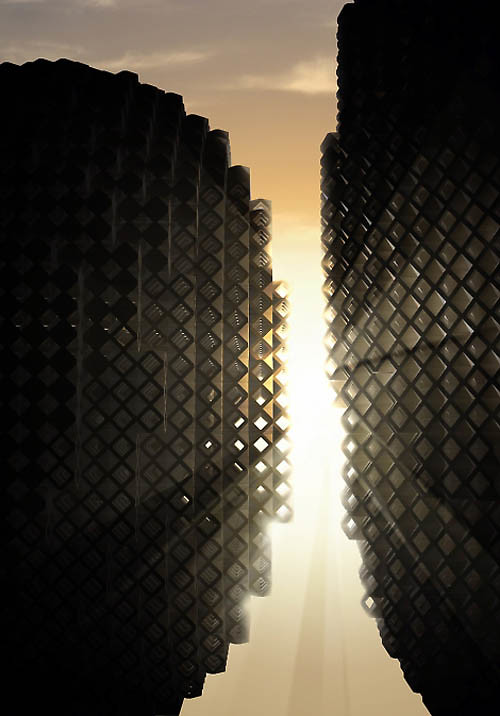 [Image: From "Microclimates" by PostlerFerguson].
[Image: From "Microclimates" by PostlerFerguson].In some ways, purely on the level of material similarities, this might remind readers of the work of Magnus Larsson, featured here last summer, in which it was proposed that landscape-scale architectural forms in the African desert could be "printed" into existence via bacterial-injection machines (read the original proposal for more information).
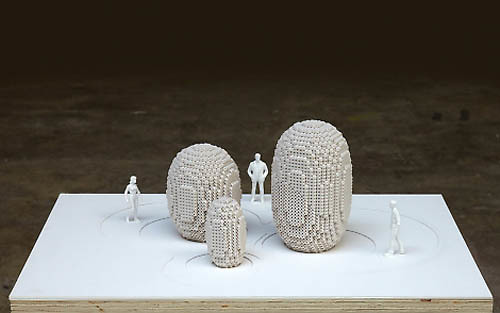


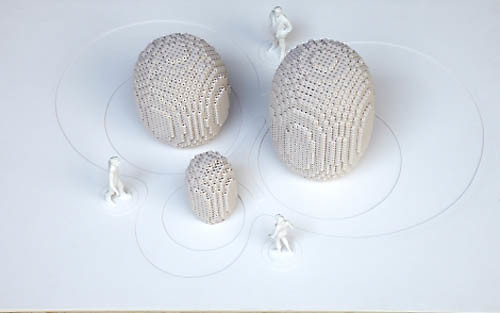
 [Images: From "Microclimates" by PostlerFerguson].
[Images: From "Microclimates" by PostlerFerguson].But the very different aesthetic here, and the functional purpose of using hives of 3D-printed sand as a way of generating thermally advantageous microclimates in the city, offers an interesting direction for the surprising popularity today of architectural projects involving stabilized sand.
(Spotted via Dezeen).
No comments:
Post a Comment